Zentan Technology SYSTEM122A PMS User Manual Cadenec Meter Instructions 040504
Zentan Technology Co., Ltd. PMS Cadenec Meter Instructions 040504
USERS MANUAL
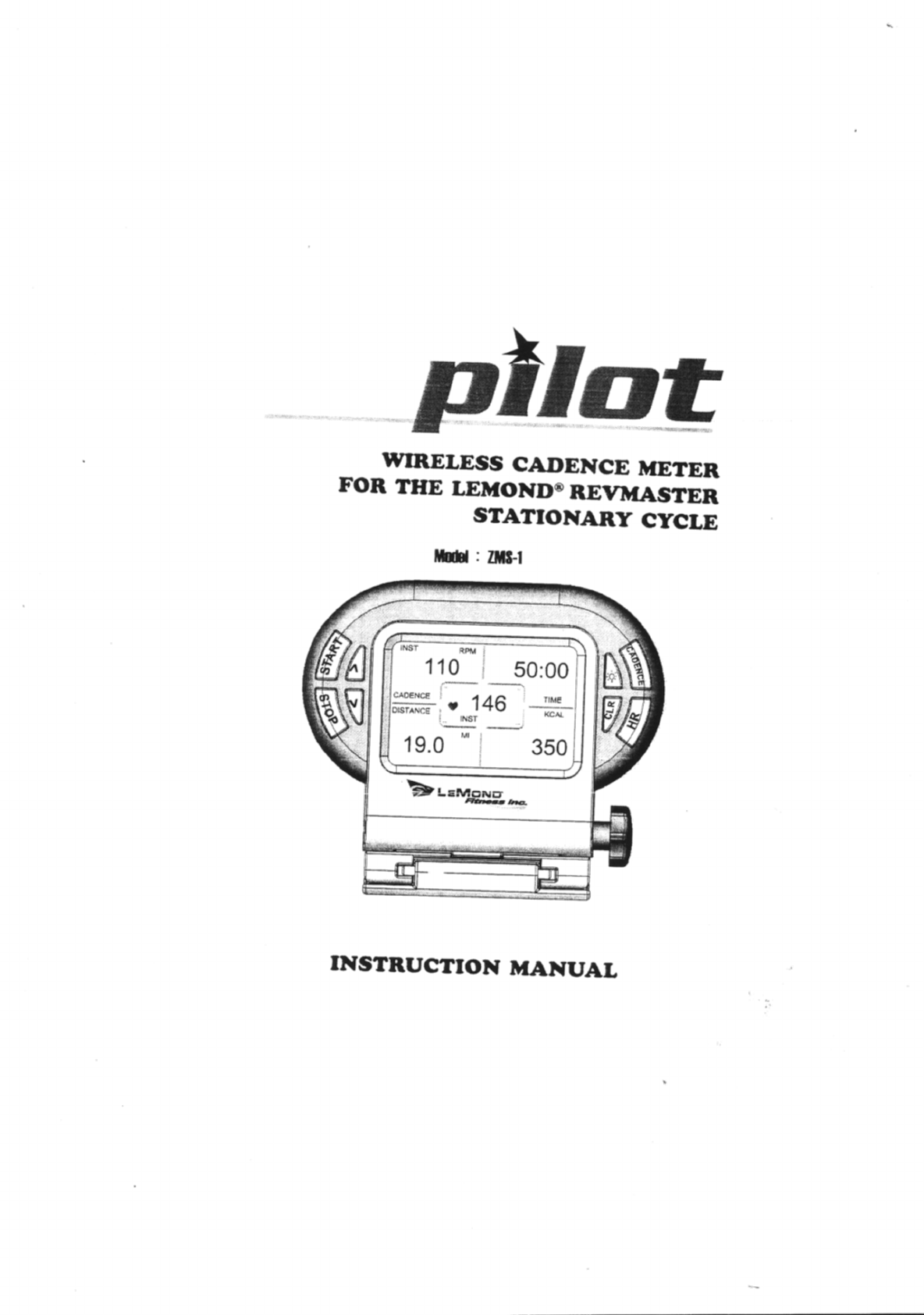

© 2004 LeMond Fitness
All rights reserved
© 2004 LeMond Fitness. LeMond, RevMaster, and Pilot are registered
trademarks of LeMond Fitness in the United States and other countries.

Page 4
IMPORTANT SAFETY INSTRUCTIONS
!
WARNING
BEFORE BEGINNING THIS OR ANY EXERCISE
PROGRAM, CONSULT YOUR PHYSICIAN.
CERTAIN EXERCISES, PROGRAMS, OR TYPES OF EQUIPMENT MAY
NOT BE APPROPRIATE FOR ALL INDIVIDUALS, ESPECIALLY IF YOU
ARE ABOVE 40 YEARS OF AGE, AND/OR HAVE PRE-EXISTING
HEALTH, AND/OR ORTHOPEDIC MEDICAL CONDITIONS. YOUR
PHYSICIAN CAN HELP YOU DETERMINE WHAT ACTIVITIES OR
PROGRAMS ARE MOST SUITABLE FOR YOU.

Page 5
This is to certify that the Pilot© wireless cadence meter is warranted by
LeMond Fitness Inc. to be free of all defects in materials and
workmanship. This warranty does not apply to any defect caused by
negligence, misuse, accident, alteration, improper maintenance, or an
“act of God.” The Pilot cadence meter can only be used on the
RevMaster indoor cycling bike. Any attempts to use this meter on any
other equipment voids the warranty.
The Pilot carries a one year warranty on the meter and transmitter.
Batteries are not warranted. Contact our Customer Service Department to
report any problems. When calling, please be prepared to provide the
customer service representative with the following information: Your
name, the serial number of the inoperable unit, and the date(s) of
purchase for the meter. If warranty replacement parts are shipped to you,
you may be required to return the inoperable part.
LeMond Fitness Inc. neither makes, assumes nor authorizes any
representative or other person to make or assume for us, any other
warranty whatsoever, whether expressed or implied, in connection with
the sale, service, or shipment of our products. We reserve the right to
make changes and improvements in our products without incurring any
obligation to similarly alter products previously purchased. In order to
maintain your product warranty and to ensure the safe and efficient
operation of your cadence meter, only authorized replacement parts can
be used. This warranty is void if parts other than those provided by
LeMond Fitness are used.
SPECIFICATIONS
Cadence Meter
Heart Rate Range: 30 to 240 bpm (beats per minute)
Heart Rate Accuracy: ± 4 bpm
Battery: 2 AA batteries
Battery Life: 6 months to 1 year, depending on usage
Transmitter
Emitted Frequency: 122 kHz
Battery: 3 AA batteries
Battery Life: 6 months to 1 year, depending on usage
WARRANTY
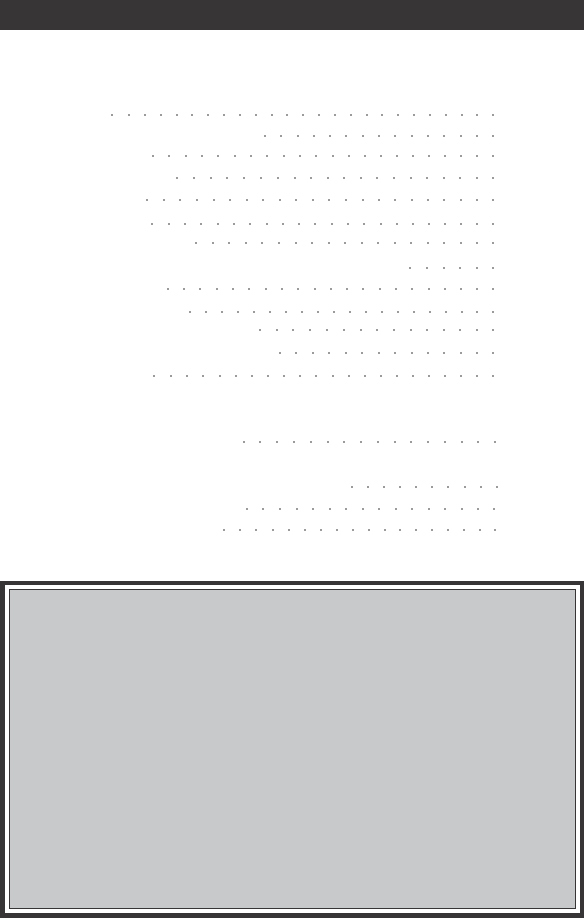
Page 6
CONTENTS
Description 7
Installation to the RevMaster 9
Console 9
Transmitter 10
Magnet 12
Display Window 13
Quick Start Program 15
Custom HR Training and Calorie Calculation 16
Key Functions 18
Cadence Training 20
Heart Rate Training 23
Start-Up Ride I - 30 Minutes 26
Start-Up Ride II - 40 Minutes 27
Troubleshooting 28
Appendix
FCC Compliance 30
Changing the Console and Transmitter
Codes and Dip Switch Codes 31
Dip Switch Codes 32
Console Codes 33
NOTE:
• Press any key to turn on the Pilot console.
• Never disassemble the console or transmitter asit
can not be reassembled.
• The console is water resistant, not water proof.
Do not deliberately place it in water.
• To clean the console, wipe it off with a clean rag
sprayed with diluted household cleaner.
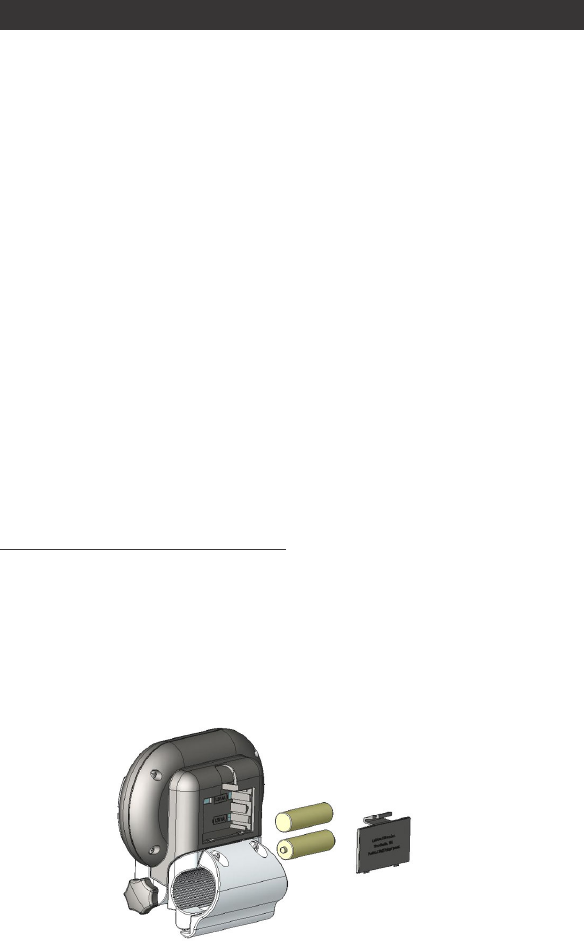
Page 7
DESCRIPTION
The Pilot assembly consists of a console, a magnet, and a
transmitter. A sensor in the transmitter counts the number of
times a magnet mounted in the right crank passes the sensor.
The transmitter will then send a coded RF (radio frequency)
signal to the console containing the measured values.
The console has inboard receivers that pick up the signals
from the transmitter and from telemetry (chest strap) heart rate
signals. The heart rate is then shown in the display window. The
console will track cadence (RPMs), speed (MPH/KPH), time,
distance, and caloric expenditure.
The console and the transmitter use AA batteries as a
source of power. Install the supplied batteries in the console and
in the transmitter prior to using.
Console Battery Installation:
1. Remove the battery cover from the back of the
console.
2. Insert 2 AA batteries into the battery compartment
and reinstall the battery cover.
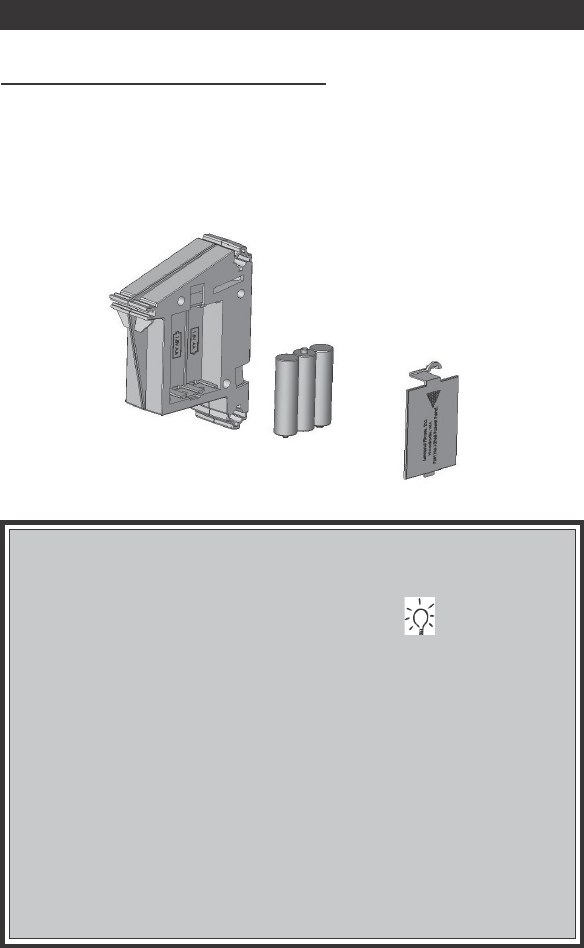
Page 8
DESCRIPTION
Transmitter Battery Installation:
1. Remove the battery cover from the transmitter.
2. Install 3 AA batteries in the battery compartment
and reinstall the battery cover.
NOTE:
• Excessive use of the back light [ ]will drain
the console batteries prematurely.
• Expected life of the console batteries is 6
months to 1 year.
• If the console battery power is low, then “BATT
LOW” will be shown in the display window for
2 seconds after the display is turned on to inform
you to change the console batteries.
• Expected life of the transmitter batteries is 6
months to 1 year.
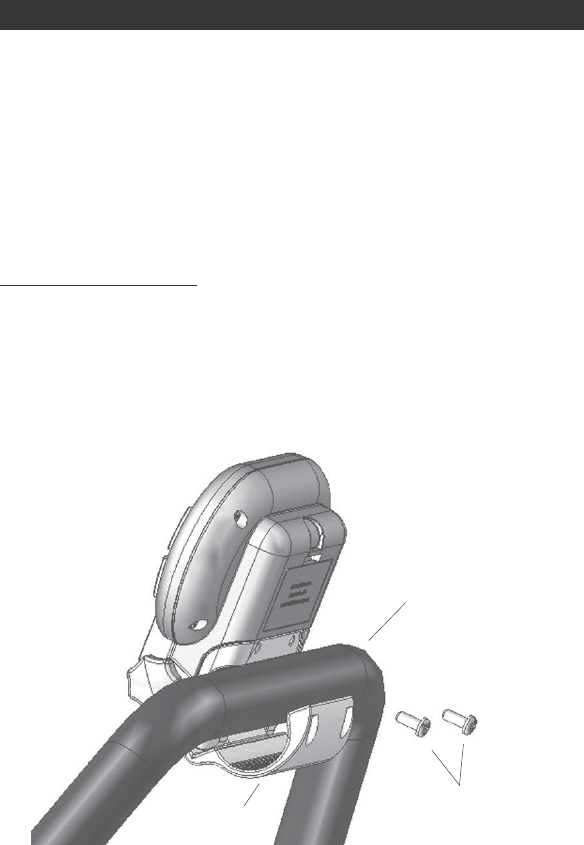
Page 9
Handlebar
Console
Clamp
Mounting Screws
INSTALLATION OF THE PILOT
THE CADENCE METER CAN ONLY BE INSTALLED ON A
LEMOND REVMASTER BIKE.
To install the meter, the following tools are needed:
• Philips Screwdriver
• 4-mm Hex Key (supplied)
Console Installation:
1. Ensure that the batteries are installed in the console and
the console turns on.
2. Spread the bottom of the console clamp apart and
clamp itback together over the top center of the handle
bar.
3. Insert a mounting screw into each hole and use a
4-mm hex key to tighten the screws.
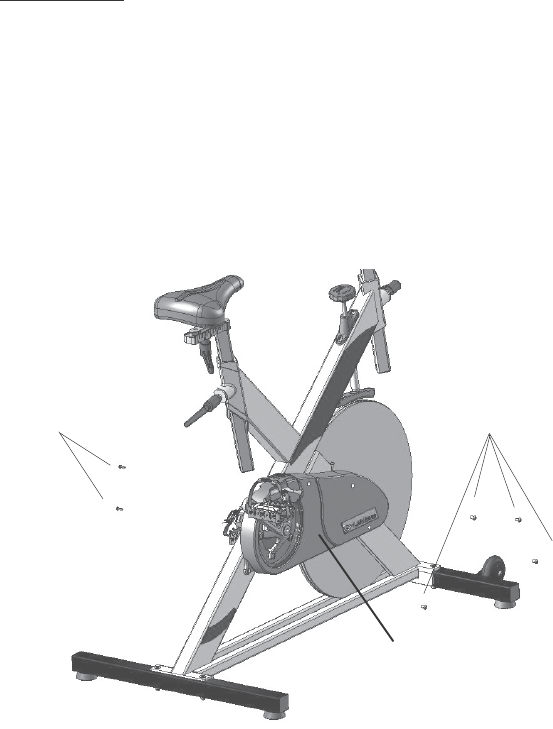
Page 10
Transmitter:
1. Ensure that the batteries are installed in the transmitter.
2. Use the philips screwdriver to remove the 2 philips head
screws from the back cover on the left side of the
bike.
3. Using the 4-mm hex key remove the 4 belt cover
hex head screws from the right side of the bike.
4. Remove the belt cover and place it inside up on the
floor.
5. Peel the backing off the adhesive pad on the transmitter.
Philips Screws Hex Head
Screws
Belt Cover
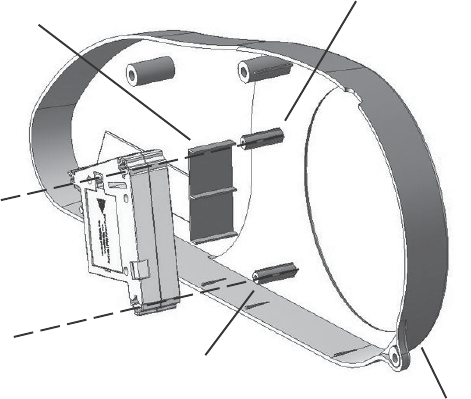
Page 11
6. Position the transmitter over the inside rib and bosses
(see picture below) of the belt cover and gently
slide into place.
7. Press the transmitter into the belt cover to secure the
adhesive backing to the inside belt cover.
7. Reinstall the belt cover.
Boss
Boss
Rib
Belt Cover
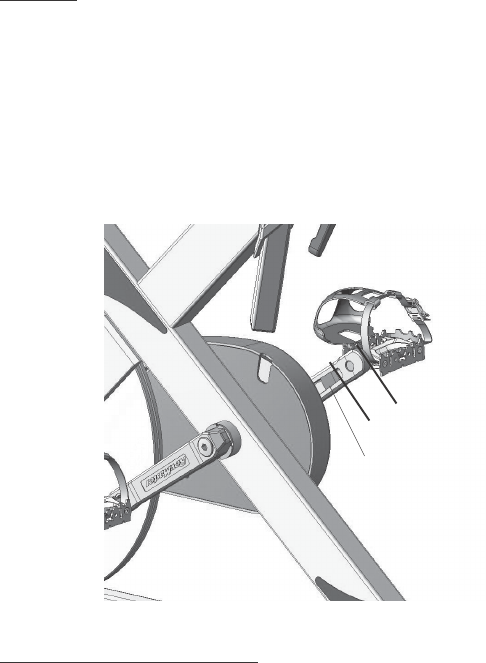
Page 12
Magnet:
1. Rotate the right crank until it is at the 2:00 position.
2. Measure out 2.0” from the inside end of the crank and
mark this location.
3. Firmy press the magnet into the groove on the inside
crank arm at the measured location (see picture below).
Checking the Installation:
1. Turn the console on by pressing START.
2. Rotate the cranks for 10 seconds and verify that the
console is picking up the crank rotation and displaying
RPM’s in the cadence section of the display window..
3. If you do not see RPMs in the display window,
press the [CADENCE] key repeatedly until “INST”
RPM is shown in the display window. If RPMs still do
not show, refer to the troubleshooting section of this
manual.
Magnet
2.0”
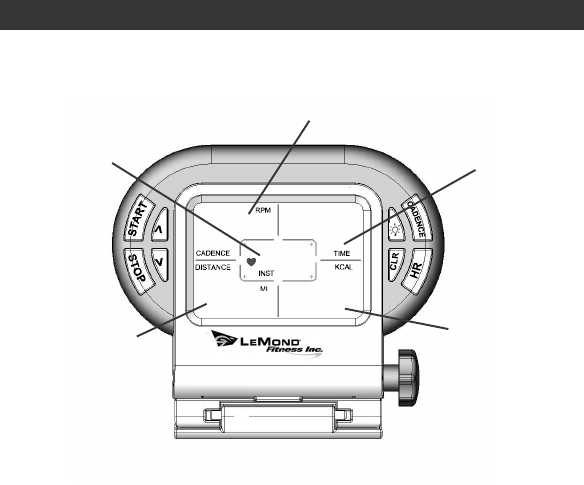
Page 13
DISPLAY WINDOW
INST
146
350
50:00
110
19.0
CADENCE
TIME
DISTANCE CALORIES
(KCAL)
HEART RATE
CADENCE
Cadence is the measurement of how fast the cranks are rotating
in RPM’s. The approximate speed of the bike can also be
displayed (MPH/KPH) in this area.
TIME
Time is the length of time (min:sec) since you pressed the start
button.
DISTANCE
Distance is the measurement of the approximate distance of the
bike if the user was riding a bike with tires the same size of the
flywheel.

Page 14
KCAL
Kcal is the approximation of calories burned during your work-
out. The calories are estimated by measuring your instantaneous
heart rate (HR) and factoring in your age, ambient HR, and
weight.
HEART RATE
This is the measurement , by telemetry (chest strap), of your
heart rate in beats per minute (BPM).
You must wear a chest strap during your workout in
order to see your heart rate. The Pilot console will detect heart
rate signals from most chest straps that emit an analog signal, or
a digital Cardiosport® chest strap. An “A” (analog) or “D”
(digital) will be displayed for a few seconds in the heart rate
display section of the display window when a HR signal is
initially received, to indicate the type of signal being received.
The Pilot also features heart zone training. After selecting
your maximum and minium heart rate limits, the console will use
flashing up and down arrows over the heart icon to indicate that
you need to adjust your intensity either up or down to stay within
your selected heart rate zone. See pg. 15 for more info.
!
WARNING
IF AT ANY TIME DURING YOUR WORKOUT YOU FEEL CHEST PAIN
,
EXPERIENCE SEVERE MUSCULAR DISCOMFORT, FEEL FAINT, OR ARE
SHORT OF BREATH, STOP EXERCISING IMMEDIATLELY. IF THE
CONDITION PERSISTS, YOU SHOULD CONSULT YOUR MEDICAL
DOCTOR IMMEDIATLEY
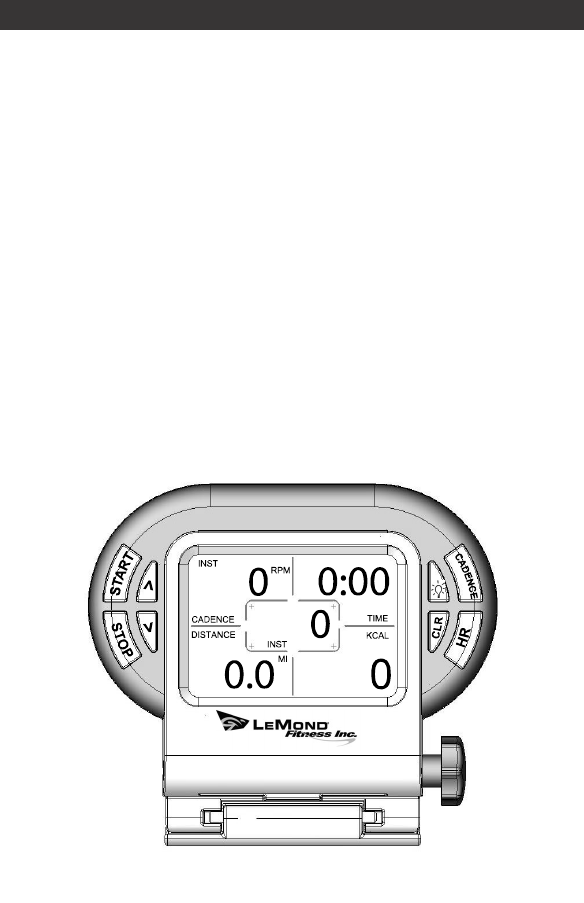
Page 15
Any time you want to bypass entering your personal data and
start using the meter, simply press any key to turn on the con-
sole. After you press the [START] key, the timer will start
counting and the console will start tracking usage information.
The Pilot will calculate calories burned based on the
following default perimeters for Quick Start Workout:
Ambient Heart Rate (AHR): 70 bpm
Age: 30 Years old
Weight: 175 lbs.
QUICK START PROGRAM

Page 16
CUSTOM HEART RATE TRAINING AND
CALORIE CALCULATIONS
1. Press and hold the [HR] key until the display window
shows “∨ 240.”
2. Use the [∨∨
∨∨
∨] key to change the upper limit of your target
heart rate from 240 BPM to your desired beats per
minute and press [HR] to select the number. Or, simply
press [HR] to accept the default value of 240 BPM.
Note: If your heart rate during your workout
session is higher than the selected upper limit of
your target heart rate range, there will be a
flashing “∨∨
∨∨
∨” above the heart icon in the display
window. This indicates that you should adjust
your workout to bring your heart rate down.
3. The display window will now show “∧ 30.”
4. Use the [∧∧
∧∧
∧] key to change the bottom limit of your
target heart rate from 30 BPM to your desired beats per
minute and press [HR] to select the number. Or, simply
press [HR] to accept the default value of 30 BPM.
Note: If your heart rate is lower than the
selected bottom limit of your target heart rate
range, there will be a flashing “∧∧
∧∧
∧” above the
heart icon. This indicates that you should adjust
your workout to bring your heart rate up.
5. The lower right portion of the display window will show
70 BPM as the default ambient heart rate (AHR).

Page 17
6. Use the [∧∧
∧∧
∧] or [∨∨
∨∨
∨] key to change the default
AHR value to your AHR value.
7. Press the [HR] key to select your AHR value.
8. The default age of 30 years old will be displayed. Use
the [∧∧
∧∧
∧] or [∨∨
∨∨
∨] key to change the default age to your age.
9. Press the [HR] key to select your age.
10. The default weight of 175 lbs. will be displayed. Use the
[∧∧
∧∧
∧] or [∨∨
∨∨
∨] key to change the default weight to your
weight.
11. Press the [HR] key to select your weight and return you
to the main screen.
12. Press the [START] key to activate the timer and start
tracking usage information.
CUSTOM HEART RATE TRAINING AND
CALORIE CALCULATIONS (CONT.)

Page 18
KEY FUNCTIONS
[START]
The start key will start the timer and enable the cadence meter to
begin calculating HR and Kcal values.
[CLEAR]
• A short press (< 3 sec) of the clear key will reset the
time, distance and calorie measurements.
• Pressing and holding the clear key (> 3sec) will reset the
AVG (average) and MAX (maximum) values for
cadence and HR measurements. In addition, the calorie
calculation values will be reset to their default values
[STOP]
The stop key will stop the calculation of the time, distance and
calorie measurements without resetting the values of the
measurements. Pressing the start key again will restart the
console
[CADENCE]
The cadence key allows you to change the cadence section of
the display window between INST (instantaneous) RPM, AVG
(average) RPM, MAX (maximum) RPM, INST (instantaneous)
MPH/KPH, AVG (average) MPH/KPH, and MAX (maximum)
MPH/KPH.
[∧∧
∧∧
∧]
The up arrow allows you to increase the default max HR, min
HR, ambient HR, age, and weight for target heart zone training
and calorie calculations.
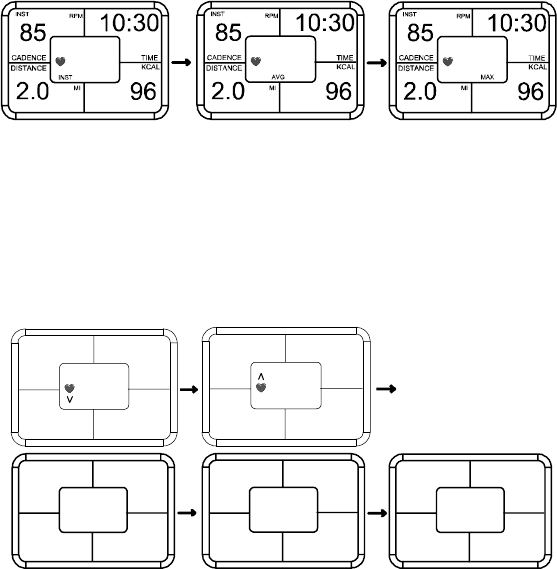
Page 19
[∨∨
∨∨
∨]
The down arrow allows you to decrease the default max HR,
min HR, ambient HR, age, and weight to select your values for
target heart zone training and calorie calculations.
[HR]
• A short press of the heart rate key allows you to change
the display of the HR section of the display window
between INST (instantaneous) HR, AVG (average) HR
and MAX (maximum) HR.
• A long press (> 3sec), places you in the HR data
entry mode where you can use the [∧] and [∨] keys to
select your upper target HR and lower target HR. You
can also modify the ambient HR, age, and weight default
values for more user specific calorie calculations.
118 120 121
30 240
AHR 70 AGE
30 17
5
WT
Lb

Page 20
[ ]
Pressing the light key will back-light the display window for 5
seconds. If another key is pressed while the light is on, the back
light will stay on for an additional 5 seconds. As long as keys are
pressed with the back light on, the console light will stay on.
Note: When the back light is on, all calculations are
suspended during this time and heart rate and cadence is
not detected.
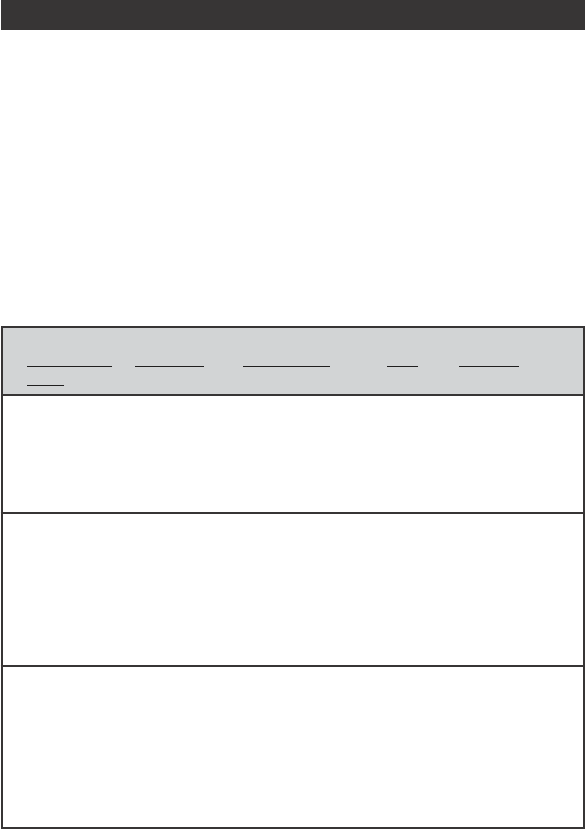
Page 21
CADENCE TRAINING
Definition of Cadence
How rapidly the cranks are rotated or the rhythm of the pedal
stroke; often referred to as RPM (revolutions per minute).
Concepts using Cadence for training
You can choose the goal of your workout in relation to
Resistance, Cadence, and Heart Rate . The intensity of your
workout is affected by pedal speed change and the resistance
applied.
Resistance Cadence Heart Rate RPE Feeling
Used
Light RPM 50-70 35%-50% MHR 1-2 Very easy
Light RPM 70-90 50%-60% MHR 3-4 Easy
Light RPM 90-100 60%-70% MHR 5 Steady;
comfortable
Light RPM 100-135 70%-85% MHR 6+ Challenging
Moderate RPM 50-70 55%-65% MHR 4-5 Somewhat
hard
Moderate RPM 70-90 65%-75% MHR 5-6 Challenging,
steady
Moderate RPM 90-100 75%-85% MHR 6-7 Hard!
Moderate RPM 100+ 85%-100% MHR 7-10 Very hard;
chasing
Heavy RPM 50-60 70%-80% MHR 6-7 Hard; talking
is hard
Heavy RPM 60-70 80%-85% MHR 7-8 Very hard;
pushing
Heavy RPM 70-80 85%-90% MHR 8-9 Very Hard!!
Heavy RPM 80+ 90%-100% MHR 9-10 Maximal

Page 22
Warm-Up
Warm up is of critical importance to the success of your cycling.
The demands of your riding profile should be prepared in the
warm-up to achieve maximal results. You must get your working
muscles to a temperature of optimum performance where the
circulatory system is delivering oxygen and nutrients efficiently to
those muscles. Depending on the workout session goal, warm up
can take from 15 minute to 20 minutes.
Time Recommendations for Specific Training Goals
The higher intensity the workout is going to be, the longer the
warm-up should be with the appropriate heart rate zones (see
Heart Rate Training section) and cadence being reached for a
short period of time.
Resistance Used Speed Change Effects on Heart Rate
Light Lower RPM HR remains relaxed
Light Higher RPM HR begins to rise
Moderate Lower RPM HR near to steady state
Moderate Higher RPM HR rises from steady
state
Heavy Lower RPM HR rises - hard effort
Heavy Higher RPM HR rises very hard to
maximal effort
10 min. Zone 1 RPM 70-80 Chat pace to start.
5 min. Zone 2 RPM 80-90 Easy ride warm-up
ends here (15 mins.)
3 min. Zone 3 RPM 95-100 Endurance ride
warm-up ends here
(18 mins.)
2 min. Zone 4 RPM 110-120 Interval training
warm-up ends here
(20 mins.)

Page 23
HEART RATE TRAINING
Heart Zone
Training Concepts
Based on Heart Rate Monitor Book for Indoor and
Outdoor Cyclists by Sally Edwards and Sally Reed.
A. Definition: A physical, mental and emotional fitness
system which maximizes your training, minimizes your
time, and results in measurable cardiovascular health
benefits.
B. Heart Zone Training (HZT): A system of setting
goals, then organizing and executing around them by
using a range of heartbeats.
C. Principles:
1. HZT is an individualized and personalized program
2. HZT makes it easier to manage now that you can
measure and monitor
3. HZT insures that multiple zones give you multiple
benefits
4. HZT is a wellness continuum from health fitness
performance
5. HZT is a complete system of cardiovascular
training.
Heart Rate Terms
Maximum HR: the highest number of contractions of the
heart muscle in one minute. You can determine your MHR
by the following calculation:
220 - [10% body weight (lbs.) / 2] + 4 (Male) or 0 (Female) = MHR
Delta HR: the difference in heart rate with a change in
body position.
Page 24
Ambient HR: the number of beats per minute your heart
contracts when you are awake but in a sedentary and
stationary position.
Peak HR: highest heart rate during any one workout
period.
Recovery HR: the number of beats per minute your heart
drops after exercise, usually measured after two minutes of
rest.
Average HR: the arithmetic average of your heart rate for
a period of time.
Steady State HR: that heart rate which is held at the same
number throughout the exercise period.
Threshold HR: that heart rate at the crossover point
between aerobic and anaerobic metabolism.
Heart Zone Training
A. Determine your heart rate (in beats per minute) for the
individual heart zones.
1. Zone 1 – Healthy Heart Zone:
(50% - 60%) of your Max HR
2. Zone 2 – Temperate Zone:
(60% - 70%) of your Max HR
3. Zone 3 – Aerobic Zone:
(70% - 80%) of your Max HR
4. Zone 4 – Threshold Zone:
(80% - 90%) of your Max HR
5. Zone 5 – Redline zone:
(90% - 100%) of your Max HR
Page 25
B. Determine your fitness goal:
1. Base - individuals just starting their workout
program need to build up to this level gradually.
2. Endurance
3. Strength
4. Speed
5. Power
C. Based on your fitness goal, determine the specific
percentage of the workout time (not including warm
up and cool down) needed in each of the following
heart zones to achieve your fitness goal:
Base
10% healthy heart 50-60% MHR
75% temperate 60-70% MHR
15% aerobic 70-80% MHR
Endurance
5% healthy heart 50-60% MHR
20% temperate 60-70% MHR
70% aerobic 70-80% MHR
5% threshold 80-90% MHR
Strength
15% temperate 60-70% MHR
75% aerobic 70-80% MHR
10% threshold 80-90% MHR
Speed
80% aerobic 70-80% MHR
10% threshold 80-90% MHR
10% redline 90-100% MHR
Peak
75% aerobic 70-80% MHR
15% threshold 80-90% MHR
10% redline 90-100% MHR

Page 26
Warm-up: Start with realistic goals by pacing the workout intensity to how you
feel. Drink water and ease up when over exerted.
Key: ® = resistance
Duration Profile MHR RPE
(5 minutes) Seated Flats (55-65%) 2-3
3 min. 80-95 RPM Minimal ®
2 min. 85-95 RPM Light ®
(5 minutes) XL’s/ DL – light resistance (60-70%) 3-4
Focus on smooth pedal strokes and transitions when changing leg speed:
2 min. /choose RPM Accelerate leg speed 8 counts
Decelerate leg speed 8 counts
2 min. /choose RPM Accelerate 15 sec.
Decelerate 15 sec.
30 sec. /choose RPM Hold accelerated steady pace
30 sec. /choose RPM Decelerate pace, easy pedaling
Endurance Pacing: build heart rate up to steady state. Be specific to individual
fitness level.
(15 minutes) Practice with the resistance knob – add small resistance increases
and then release. Notice changes in heart rate when exerting more intensity.
Overall Profile: Start on flat road and establish starting resistance. Build leg
speed up to 80 rpm working into the headwind. Describe pace line of riders who
alternate turns riding at the front, pulling then resting by sitting in. Then, a short
hill climb before the spin home.
Duration Profile MHR RPE
1 min. choose RPM Moderate resistance (70-85%) 4-6.5
1 min. 70-80 RPM Add ® try to maint. cadence
1 min. 70-80 RPM Add ® try to maint. cadence
1 min. slow RPM Add ®/option to stand up – slow down cadence
1 min. 80-100 RPM Release ® and spin easy (60-70%) 3-4
[5 min.] [Repeat above sequence] (70-85%) 4-6.5
2 min. 80-100 RPM Seated Flat (60-70%) 3-4
3 min. 60-70 RPM Steep Hill Climb (75-85%) 5.5-6.5
Cool Down:
(2 minutes) Seated Flat (55-65%) 2-3
80-90 RPM Comfortable spin with light ®
Stretch: Option on and off the bike.
(3 minutes)
Stretch the muscles worked during the training. Add a few rotational torso
movements to ease up any tension in the lower back or upper body.
START-UP RIDE I - 30 MINUTES

Page 27
Duration Profile MHR RPE
(15 minutes) Seated Flats (55-65%) 2-3.5
8 min. 80-110 RPM Warm-up with minimal ®
Gradually increase leg speed to 110 RPM
2 min. 70-80 RPM Add small increments of ® (65%-70%) 3.5-4.5
2 min. 70-80 RPM Stand and add some ®, but (70-75%) 5
maintain the same cadence.
3 min. 80-110 RPM Seated recovery spin (55-65%) 2-3.5
(14 minutes) Hill Climb
Focus on training strength and endurance
1 min. 65-70 RPM Standing Climb (70-75%) 4-5
Add ® and slow cadence down
1 min. 70-75 RPM Seated Climb – same ® (75-80%) 5+
Slight increase of RPM
2 min. 70-75 RPM Standing Climb (75-85%) 5.5-6
Add slight ® same cadence
2 min. steady Seated Climb (80-85%) 6 – 7
Keep ® and try to bring cadence
back up if it slows down.
2 min. steady Standing Climb (80-85%) 6 – 7
Maintain intensity and speed
2 min. steady Seated Climb/ Focus on (80-85%) 7
breathing and efficient pedal strokes.
1 min. 75-80 RPM Standing Climb/speed up (85+%) 7+
cadence, but not a major attack.
1 min. 65-75 RPM Seated Climb – ease up (85+%) 7+
slightly on cadence if necessary.
1 min. 70-80 RPM Stand Climb (85+%) 7-8+
Intensity is very strong; focus on breathing and maintaining cadence. Monitor
the intensity and ease up if the heart rate feels too uncomfortable.
1 min. Seated Climb (85+%) 7-8+
Finish strong without compromising technique.
(6 minutes) Downhill and Recovery
Release to moderately light tension and speed up cadence:
3 min. 95-110+ RPM Seated Downhill (70-75%) 4-5
3 min. 90-95 RPM Flat road spin (65-70%) 3.5-4.5
(5 minutes) Cool Down and Stretch (50-60%) 1-2
Release tension to light resistance and gradually decrease pedal speed.
80-90 RPM Easy pedaling, then stop to stretch
Recover and lower heart rate. Stretch the muscles worked during the training. Add
a few rotational torso movements to ease up any tension in the lower back or
upper body.
START-UP RIDE II - 40 MINUTES

Page 28
TROUBLESHOOTING
No Display on Console
1. Press any key to bring the console out of sleep mode.
2. Ensure that the magnet is installed properly in the
crank.
3. Ensure that the batteries are installed properly in the
console and transmitter. If they are, install fresh
batteries.
3. Verify that the console dip switch code matches the
transmitter dip switch code (see Appendix).
4. Call our Customer Service department at
425-482-6773 for assistance.
No Heart Rate signal displayed
1. Ensure that your chest strap is worn correctly, and that
there is moisture under the electrodes of the chest strap.
2. Relocate the RevMaster bike away from any equipment
that could potentially interrupt the radio frequency signal,
such as a DVD player or television, etc.
3. Enure that there is at least 36 inches between bikes in a
group exercise class setting.
4. Call our Customer Service department at
425-482-6773 for assistance.
RPM or HR does not change
1. Press [CADENCE] repeatedly to toggle between
instantaneous (INS), average (AVG), and maximum
(MAX) values.
2. Press [HR] repeatedly to toggle between instantaneous
(INS), average (AVG), and maximum (MAX) values.
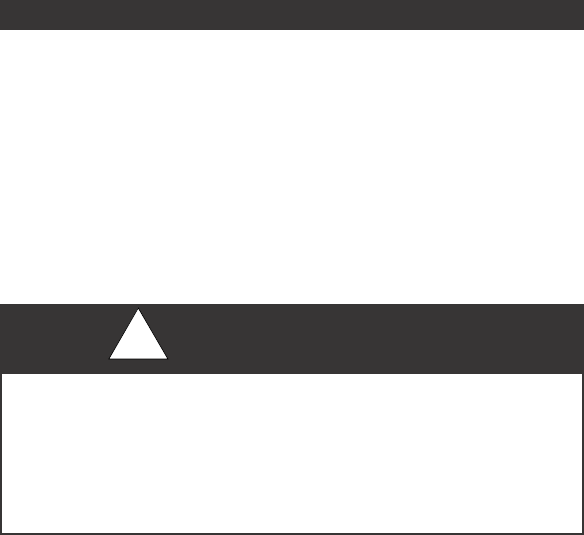
Page 29
TROUBLESHOOTING (CONT.)
Cadence number jumps high or low
1. Separate bikes that may be set to the same console
code and are cross-talking, or change the console and
transmitter codes on the bike (see Appendix).
2. Relocate the bike to a different part of the room, away
from any RF interfernce areas.
3. Call our Customer Service department at
425-482-6773 for assistance.
Heart Rate signal gets interrupted or drops out
1. Ensure that there is a minimum distance of 36 inches
between bikes.
2. Verify that your chest strap is secure and that the
electrodes are making contact with your chest at all
times.
3. Call our Customer Service department at
425-482-6773 for assistance.
!
CAUTION
EXTERNAL INTERFERENCE MAY BE CAUSED BY
NEARBY TELEVISIONS, STEREO EQUIPMENT, SPEAKERS,
ELECTRICAL WIRE CABLING, ETC. IF YOU EXPERIENCE
DISTURBANCES IN THE CONSOLE DISPLAY TRY MOVING YOUR
BIKE(S) AWAY FROM POTENTIAL RF INTERFERENCE AREAS.

Page 30
APPENDIX
Notice of FCC Compliance
This equipment has been tested and found to comply
with the limits for a Class C Low Power Communication Device
Transmitter, pursuant to Part 15 of the FCC rules. Operation is
subject to the following conditions: (1) This device may not
cause harmful interference, and (2) this device must accept any
interference received, including interference that may cause
undesired operation.
There is no guarantee that interference will not occur
in a particular installation. If this equipment experiences interfer-
ence from a radio, television, or other RF signal, the user is
encouraged to try and correct the interference by increasing the
separation between the equipment and the apparatus emitting the
interfering RF signal.
!WARNING
CHANGES OR MODIFICATIONS TO EQUIPMENT NOT
EXPRESSLY APPROVED BY LEMOND® FITNESS COULD VOID THE
USER’S AUTHORITY TO OPERATE THIS EQUIPMENT.
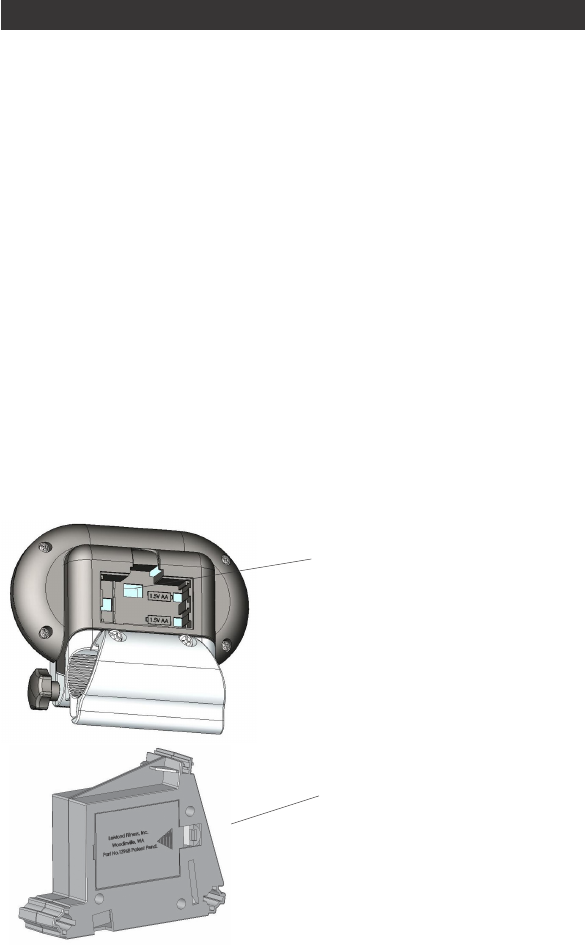
Page 31
APPENDIX
Changing the Console and Transmitter Codes
The console and the transmitter have dip switches that
allow you to change the transmission code back and for the
between a total of 16 different number codes (00-15) to help
reduce cross talking between bikes in a class environment.
Cross talking is when one bike picks up the RF signal from
another bike, and interferes with the displayed numbers on the
console.
• As long as the transmitter and console “dip” switches are
set to the same number code, the two will communicate.
• To change the number codes, simply flip the dip switches
on each component to the same number code.
The console dip switches
are located in the battery
compartment
The transmitter dip switches
are located below the
battery compartment
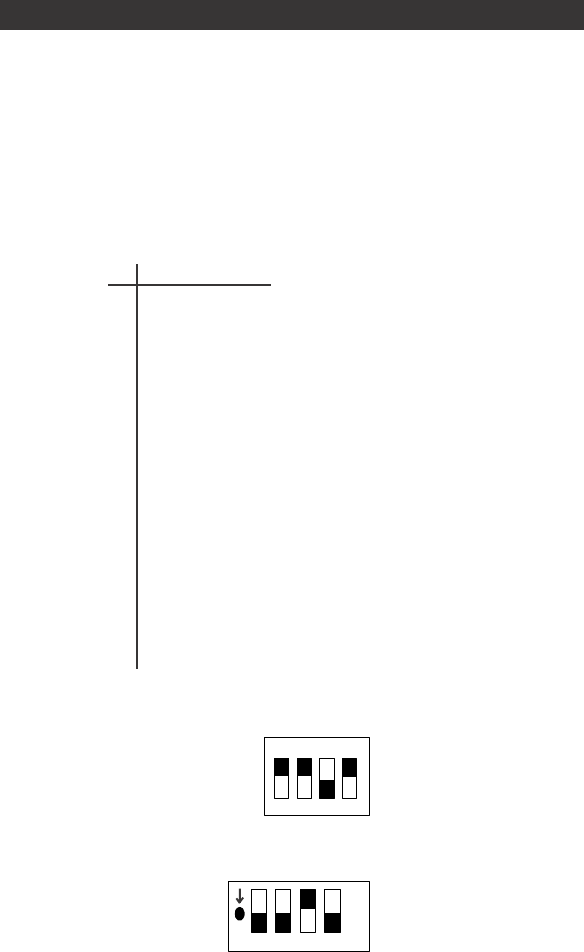
Page 32
Dip Switch Codes
Match the code on the console to the code on the transmitter by
flipping the dip switches on each unit to the corresponding up/
down sequences for the desired code as listed below.
1234
00 off off off off
01 on off off off
02 off on off off
03 on on off off
04 off off on off
05 on off on off
06 off on on off
07 on on on off
08 off off off on
09 on off off on
10 off on off on
11 on on off on
12 off off on on
13 on off on on
14 off on on on
15 on on on on
Note:
• The “on” position for the console dip switches is up toward
the top of the console.
• The “on” position for the transmitter dip switches is down
toward the battery cover.
APPENDIX
ON KE
4
32
1
N
K
E
4
32
1
Code Number (00-15)
Dip Switch Number
Console Dip Switches
set to Code 11
Transmitter Dip
Switches set to Code 11

Page 33
APPENDIX
Console Codes
[CADENCE] + [HR]
Pressing both these keys switches from English units - Miles (Mi),
Miles per hour (MPH), and pounds (Lbs); to Metric units - Kilometers
(Km), kilometers per hour (KPH), and kilograms (Kg).
[CADENCE] + [∧∧
∧∧
∧]
Pressing both these keys displays the console code.
Note: the console will not display the transmitter code, you
must remove the belt cover and visually inspect the transmitter
to see what code it is set at.
[CADENCE] + [∨∨
∨∨
∨]
Pressing both these keys displays the chest strap HR code.
[STOP] + [∧∧
∧∧
∧] + [CADENCE]
Pressing all three keys at once will light up the entire display window.
Use this code to verify that the Liquid Crystal Display (LCD) screen is
working properly.

Page 34
Corporate Headquarters
17280 Woodinville-Redmond Rd
Building B, Suite 888
Woodinville, WA 98072
Telephone: (425) 482-6773
Fax: (425) 482-6724
www.LeMondfitness.com
PN: 300204
© 2004 LeMond Fitness. LeMond, RevMaster, and Pilot are registered
trademarks of LeMond Fitness in the United States and other countries.